A comparison of the KEF LS60 Wireless and KEF LS50 Wireless II
Which one is better?
When it comes to premium sound and innovative technologies in the world of wireless speakers, KEF LS Wireless models are undoubtedly leaders. Today we would like to introduce two of the most remarkable members of this family and look into their special features, differences and performance: the KEF LS60 Wireless and the KEF LS50 Wireless. Both speakers are masterpieces in terms of design, performance and ease of use, but which model comes out on top and is the ultimate favorite in the audiophile world? Prepare to be immersed in a fascinating world of sound and technology, and discover which of these two impressive speakers best suits your individual sound needs.
Introducing the KEF LS60 Wireless and KEF LS50 Wireless II.
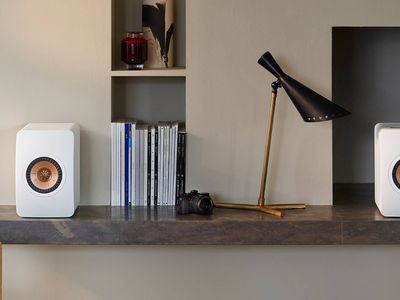
Differences in design and technology
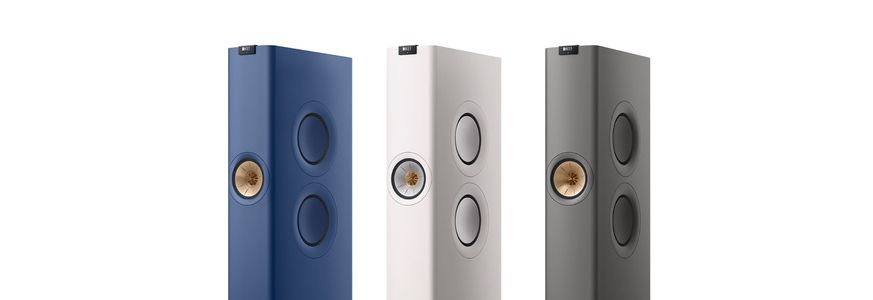 One of the main differentiators between the two speakers is the design and technology. While the KEF LS60 Wireless is a 3-way speaker, the KEF LS50 Wireless II is a 2-way speaker. 3-way designs use a midrange driver in addition to the tweeter and woofers used in 2-way designs. Designing a crossover for a 3-way speaker is a complicated process and usually increases the overall cost of the speaker.
One of the main differentiators between the two speakers is the design and technology. While the KEF LS60 Wireless is a 3-way speaker, the KEF LS50 Wireless II is a 2-way speaker. 3-way designs use a midrange driver in addition to the tweeter and woofers used in 2-way designs. Designing a crossover for a 3-way speaker is a complicated process and usually increases the overall cost of the speaker.
The LS60 Wireless features a 0.75-inch aluminum tweeter, a 4-inch midrange driver and four 5.25-inch Uni-Core force-cancelling woofers. In contrast, the LS50 Wireless II features a 1-inch aluminum hard-dome tweeter and a 5.25-inch aluminum woofer. Thus, the LS60 Wireless offers greater driver diversity and sound processing range compared to the LS50 Wireless II, yet both speakers are impressive in their own right and offer different sound experiences depending on individual needs and preferences.
Frequency Range Comparison
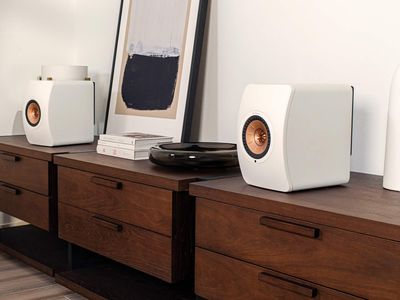 When comparing the frequency ranges between KEF LS60 Wireless and KEF LS50 Wireless II, there are some notable differences. The LS60 Wireless speaker offers a frequency range of 31 Hz to 48 kHz, allowing it to achieve impressive depth in the bass. In contrast, the LS50 Wireless has a frequency range of 79 Hz to 28 kHz, which means it doesn't go as deep in the bass as the LS60.
When comparing the frequency ranges between KEF LS60 Wireless and KEF LS50 Wireless II, there are some notable differences. The LS60 Wireless speaker offers a frequency range of 31 Hz to 48 kHz, allowing it to achieve impressive depth in the bass. In contrast, the LS50 Wireless has a frequency range of 79 Hz to 28 kHz, which means it doesn't go as deep in the bass as the LS60.
This is an important factor for audiophiles and music lovers who want accurate and detailed sound across the spectrum. It should be noted, however, that none of these speakers cover the full 20 Hz to 20 kHz frequency range that is considered standard for a complete audio experience. Therefore, we recommend pairing these speakers with a subwoofer for the best possible sound quality.
Power and Gain
When it comes to power and gain, an interesting difference between KEF's two speaker models becomes apparent. The LS60 Wireless offers a maximum sampling rate of 24 bits / 384 kHz, while the LS50 Wireless offers a maximum sampling rate of 24 bits / 192 kHz. This means that the LS60 Wireless can provide higher audio resolution, resulting in clearer reproduction of details in music.
In terms of amplification, the LS60 Wireless is powered by a powerful integrated amplifier. This is especially important when it comes to providing the necessary power to the drivers to ensure an optimal audio experience. It can also result in the LS60 Wireless being better able to handle difficult room acoustics while maintaining accurate sound reproduction.
In general, I'd say the LS60 Wireless comes out ahead in terms of power and gain, thanks to its ability to handle higher audio resolutions and be powered by an integrated amplifier. However, the LS50 Wireless is still an excellent speaker and offers an impressive audio experience, especially when paired with a high-quality amplifier.
Recommended Subwoofers
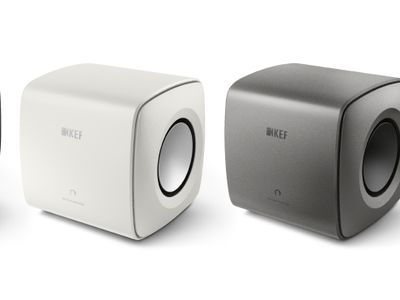 As an audio connoisseur, I recommend adding a subwoofer to your KEF LS60 Wireless or KEF LS50 Wireless II speaker system to further enhance the bass performance and sound experience. A good option here might be the KEF KC62, designed specifically to pair with KEF speakers. This compact subwoofer offers impressive bass performance and plays seamlessly with the integrated bass drivers in the speakers.
As an audio connoisseur, I recommend adding a subwoofer to your KEF LS60 Wireless or KEF LS50 Wireless II speaker system to further enhance the bass performance and sound experience. A good option here might be the KEF KC62, designed specifically to pair with KEF speakers. This compact subwoofer offers impressive bass performance and plays seamlessly with the integrated bass drivers in the speakers.
Another interesting alternative could be the Monolith 15 or 16, if they are available in Europe. These powerful subwoofers offer even deeper bass frequencies, making them brilliant for pairing with KEF Wireless speakers. By adding one or more of these subwoofers to your audio system, you'll add depth and dynamics to your listening experience.
However, there are other high-quality subwoofers from reputable manufacturers like SVS that are worth considering. For example, the SVS SB3000 subwoofers offer excellent bass performance and pair well with KEF LS speakers.
The bottom line is that it all comes down to your personal preferences and budget. I recommend you try different subwoofers and test which one fits best with your KEF LS wireless speakers and your room. This way you can get the best possible sound experience for your needs and desires.
Dimensions
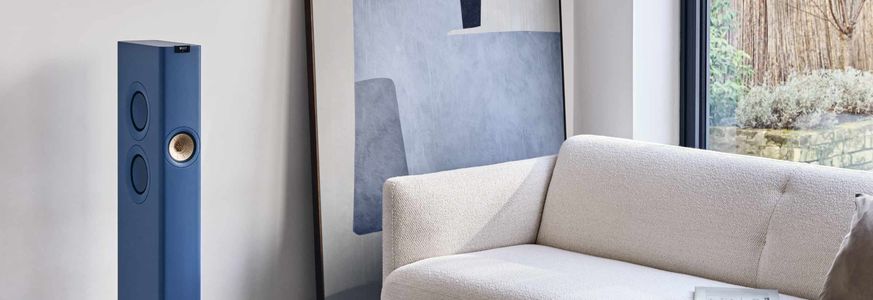 Dimensions sometimes play an important role in choosing the right speaker due to space limitations or in some cases purely for aesthetic reasons. In this section, we compare the external dimensions of the KEF LS60 Wireless and KEF LS50 Wireless II speakers. The KEF LS60 Wireless has external dimensions of 1090.0 x 212.0 x 394.0 mm (42.9 x 8.3 x 15.5 inches), while the KEF LS50 Wireless II has dimensions of 301.6 x 200.0 x 336.5 mm (11.8 x 7.75 x 13.25 inches).
Dimensions sometimes play an important role in choosing the right speaker due to space limitations or in some cases purely for aesthetic reasons. In this section, we compare the external dimensions of the KEF LS60 Wireless and KEF LS50 Wireless II speakers. The KEF LS60 Wireless has external dimensions of 1090.0 x 212.0 x 394.0 mm (42.9 x 8.3 x 15.5 inches), while the KEF LS50 Wireless II has dimensions of 301.6 x 200.0 x 336.5 mm (11.8 x 7.75 x 13.25 inches).
This means that the LS60 Wireless speaker is significantly larger than the LS50 Wireless, both in height and depth. This could be important when making a decision, depending on how much space you have available for your speakers or which size is more suitable for your interior design.
In summary, both KEF models have their own charm and offer different strengths depending on your requirements and space. Therefore, the dimensional comparison should be taken into account when deciding on one of the two models.
Bass reflex ports
Rear-ported speakers include both the KEF LS60 Wireless and KEF LS50 Wireless II, which means that both models have rear bass reflex ports. In general, speakers with rear ports require more distance between the back of the speaker and the wall compared to closed and front/bottom bass speakers.
By placing the speakers too close to the walls, the bass may boom uncomfortably. This is especially relevant when you consider that the LS60 Wireless has a minimum frequency of 31 Hz and the LS50 Wireless has a minimum frequency of 79 Hz. This allows the LS60 Wireless to reproduce significantly lower bass frequencies than the LS50 Wireless.
However, neither speaker provides full sound coverage (20 Hz - 20 kHz), which is why it is recommended to combine them with a subwoofer to achieve deeper bass frequencies. By placing the rear port speakers correctly in the room and combining them with a subwoofer, we can enjoy the full sound experience and get the most out of the KEF LS60 Wireless and KEF LS50 Wireless II.
Recommended for what kind of listener?
First, let's consider the type of listener for which the KEF LS60 Wireless and KEF LS50 Wireless II are best suited. The LS60 Wireless is a great option for audiophile listeners looking for powerful and accurate sound. The 3-way design and extended bass range make this option great for use in larger rooms or for those who enjoy deep and powerful bass.
The KEF LS50 Wireless II, on the other hand, may be more suited for listeners looking for a more compact yet high-quality speaker. With a 2-way design and lower bass output compared to the LS60, this option is more suited for smaller rooms or listeners with less need for deep bass. However, both speakers are versatile enough to suit different music genres and listening habits; it ultimately depends on the listener's individual preferences and requirements.
Price comparison and summary of pros and cons
Price-wise, the KEF LS60 Wireless is priced at around $6,999.99 for the system and offers some advantages over the KEF LS50 Wireless II, which is available for $2,799.99. The LS60 Wireless has higher power output thanks to the 700W combined output of its three internal amplifiers, and offers a slim design as a floorstanding speaker that takes up little space.
However, the higher resolution and spaciousness of the LS50 Wireless may be more apparent on some music. In summary, both speaker systems are excellent in their performance, though the LS60 Wireless may be better suited for more demanding listeners and those looking for an impressive floorstander. The LS50 Wireless, on the other hand, still offers top-notch sound quality at a more affordable price.
KEF LS50 Wireless II
Pros:
- 32-bit maximum depth / 384 kHz maximum sampling rate
- Integrated amplifier
- Compact size
- 1 aluminum hard dome tweeter and 1 x 5.25 aluminum woofer
Disadvantages:
- May require a subwoofer to experience full range.
KEF LS60 Wireless
Pros:
- 24-bit maximum depth / 384 kHz maximum sampling rate
- 380-watt RMS (760-watt peak) integrated amplifier
- 0.75 aluminum dome tweeter, 4 midrange drivers and 4 x 5.25 uni-core woofers with power transmission
- Has a tight bass quality
Disadvantages:
- Larger dimensions
- May need space between the back of the speaker and the wall for a rear opening.
- Higher price point
,no_upscale(),format(png)/prod/3/0/1/bimg_301443_1349295_20211019_122050.png)
,no_upscale(),format(png)/prod/3/0/1/bimg_301442_1604497168.jpg)
,no_upscale(),format(png)/prod/3/0/1/bimg_301441_1349273_20211019_122052.png)
,no_upscale(),format(png)/prod/3/0/1/bimg_301444_1349296_20211019_122051.png)
,no_upscale(),format(png)/prod/4/1/4/bimg_414398_318067992.jpg)
,no_upscale(),format(png)/prod/4/1/4/bimg_414397_897067987.jpg)
,format(png)/advert/ad-nXo-kef-ls60-wireless-klanggenuss-zukunft.jpg)
,format(png)/advert/ad-wiB-es-tut-mir-leid-aber-als-text-modell-kann-ich-keinenn-generieren-da-ich-keine-bilder-sehen.jpg)
,format(png)/advert/ad-UDp-kef-lsx-ii-vs-kef-lsx-ii-lt.jpg)
,format(png)/advert/ad-f7Y-plattenspieler-kef-ls60-anleitung.jpg)
,no_upscale(),format(png)/prod/4/1/4/bimg_414399_1652361295.jpg)